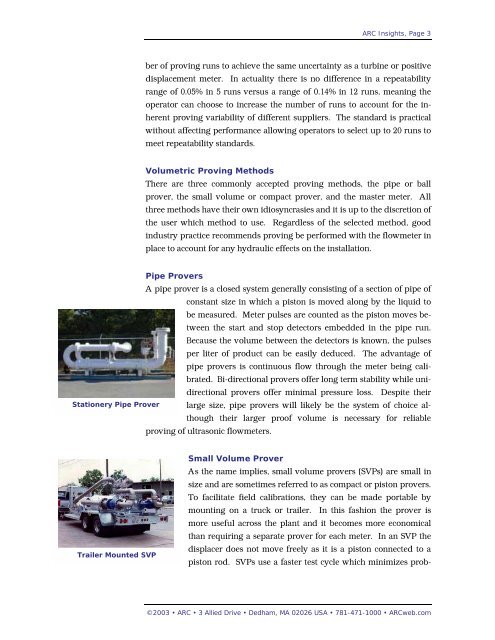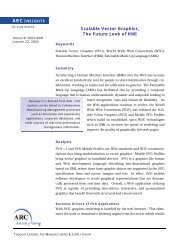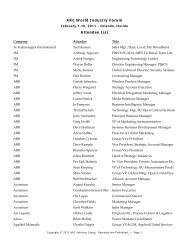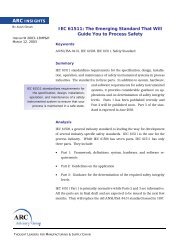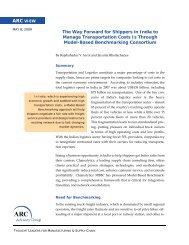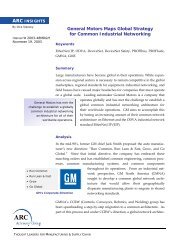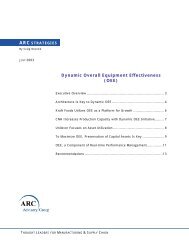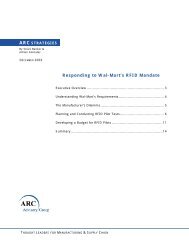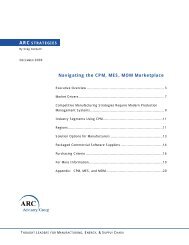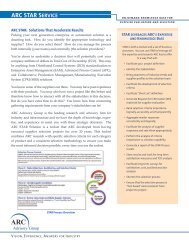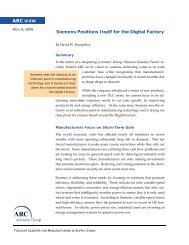Ultrasonic Flowmeters for Liquid Hydrocarbon Custody Transfer ...
Ultrasonic Flowmeters for Liquid Hydrocarbon Custody Transfer ...
Ultrasonic Flowmeters for Liquid Hydrocarbon Custody Transfer ...
Create successful ePaper yourself
Turn your PDF publications into a flip-book with our unique Google optimized e-Paper software.
ARC Insights, Page 3<br />
ber of proving runs to achieve the same uncertainty as a turbine or positive<br />
displacement meter. In actuality there is no difference in a repeatability<br />
range of 0.05% in 5 runs versus a range of 0.14% in 12 runs, meaning the<br />
operator can choose to increase the number of runs to account <strong>for</strong> the inherent<br />
proving variability of different suppliers. The standard is practical<br />
without affecting per<strong>for</strong>mance allowing operators to select up to 20 runs to<br />
meet repeatability standards.<br />
Volumetric Proving Methods<br />
There are three commonly accepted proving methods, the pipe or ball<br />
prover, the small volume or compact prover, and the master meter. All<br />
three methods have their own idiosyncrasies and it is up to the discretion of<br />
the user which method to use. Regardless of the selected method, good<br />
industry practice recommends proving be per<strong>for</strong>med with the flowmeter in<br />
place to account <strong>for</strong> any hydraulic effects on the installation.<br />
Stationery Pipe Prover<br />
Pipe Provers<br />
A pipe prover is a closed system generally consisting of a section of pipe of<br />
constant size in which a piston is moved along by the liquid to<br />
be measured. Meter pulses are counted as the piston moves between<br />
the start and stop detectors embedded in the pipe run.<br />
Because the volume between the detectors is known, the pulses<br />
per liter of product can be easily deduced. The advantage of<br />
pipe provers is continuous flow through the meter being calibrated.<br />
Bi-directional provers offer long term stability while unidirectional<br />
provers offer minimal pressure loss. Despite their<br />
large size, pipe provers will likely be the system of choice although<br />
their larger proof volume is necessary <strong>for</strong> reliable<br />
proving of ultrasonic flowmeters.<br />
Trailer Mounted SVP<br />
Small Volume Prover<br />
As the name implies, small volume provers (SVPs) are small in<br />
size and are sometimes referred to as compact or piston provers.<br />
To facilitate field calibrations, they can be made portable by<br />
mounting on a truck or trailer. In this fashion the prover is<br />
more useful across the plant and it becomes more economical<br />
than requiring a separate prover <strong>for</strong> each meter. In an SVP the<br />
displacer does not move freely as it is a piston connected to a<br />
piston rod. SVPs use a faster test cycle which minimizes prob-<br />
©2003 • ARC • 3 Allied Drive • Dedham, MA 02026 USA • 781-471-1000 • ARCweb.com


